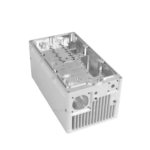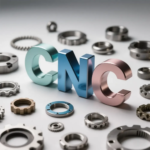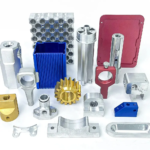Introduction to 3D Printing of PVC Material
Three-dimensional (3D) printing has transformed manufacturing processes across various industries, allowing for greater customization, speed, and cost efficiency. One material that has gained attention in the realm of 3D printing is Polyvinyl Chloride (PVC). Known primarily for its application in construction and plumbing, PVC is finding new life in the world of additive manufacturing. In this article, we will explore the properties of PVC, its benefits for 3D printing, techniques used, and the potential applications that make it an exciting choice for various projects.
Understanding PVC Material
PVC is a versatile thermoplastic polymer that is widely used for its durability, chemical resistance, and lightweight properties. It comes in two primary forms: rigid PVC, often used in construction (like pipes and siding), and flexible PVC, which is more adaptable and used in applications such as electrical cable insulation.
Properties of PVC in 3D Printing
When it comes to 3D printing, PVC possesses several key properties that make it an appealing material:
Durability: PVC is known for its toughness and resistance to impact, which means that printed objects can withstand significant stress without breaking.
Chemical Resistance: One of the standout features of PVC is its resistance to a wide array of chemicals. This characteristic makes it suitable for parts that may come into contact with various substances, especially in industrial applications.
Lightweight: Compared to other materials, PVC is relatively lightweight, which can be beneficial for creating parts that need to maintain a low weight for ease of handling or transport.
Cost-Effectiveness: PVC is generally an affordable material, making it a practical choice for both prototyping and production runs.
- Good Surface Finish: The printing process usually results in a relatively smooth surface, which can be advantageous for applications where aesthetic appearance matters.
Benefits of 3D Printing with PVC
Integrating PVC into a 3D printing workflow offers several advantages:
Customization: With 3D printing, manufacturers can easily customize designs according to specific requirements, creating tailored solutions that traditional manufacturing methods may not efficiently support.
Rapid Prototyping: The fast printing speeds associated with 3D printing allow designers to create prototypes in a fraction of the time it would take through traditional methods. This is particularly beneficial for design iterations and testing purposes.
Reduced Waste: Traditional manufacturing often involves subtracting material to create a part, which can lead to significant waste. 3D printing uses an additive approach, laying down material layer by layer which minimizes leftover materials.
- Complex Geometries: 3D printing enables the creation of intricate designs and complex geometries that would be difficult or impossible to achieve with conventional methods, opening up new design possibilities.
Techniques for 3D Printing PVC
When it comes to 3D printing with PVC, there are several techniques and technologies that can be employed:
Fused Deposition Modeling (FDM): This is the most common method used in 3D printing, where a thermoplastic filament is heated and extruded through a nozzle to build up layers. Although FDM can be used for PVC, it requires a specialized setup due to the higher melting point of PVC filaments and their tendency to produce more fumes during printing.
Selective Laser Sintering (SLS): In this process, powdered PVC is selectively fused using a laser. SLS is advantageous as it can produce complex geometries with little to no support structures due to the powder bed environment, allowing for efficient use of material.
Digital Light Processing (DLP): DLP employs UV light to cure a liquid resin that can be modified to include PVC. This technique produces high-resolution prints and can work quickly due to its layer-by-layer exposure.
- Binder Jetting: This method involves applying a liquid binder to layers of powdered PVC. The binder glues the powder together, and after printing is complete, the final object can be sintered for additional strength.
Challenges in 3D Printing PVC
While 3D printing with PVC has many benefits, it is not without challenges:
Fumes and Safety Concerns: During the printing process, PVC can release harmful fumes when heated. Adequate ventilation and protective gear are essential to mitigate health risks.
Printer Compatibility: Not all 3D printers are equipped to handle PVC filaments. Ensuring that your equipment is compatible is crucial for successful prints.
- Adhesion Issues: PVC’s smooth surface can often lead to poor adhesion on print beds, which may affect print quality. Proper bed preparation and suitable adhesives or coatings can help resolve this issue.
Applications of 3D Printing with PVC
The ability to work with PVC in 3D printing opens a variety of application opportunities:
Prototyping and Product Development: From toys to consumer products, 3D printing allows companies to quickly develop and test prototypes for feedback and refinement.
Medical Devices: Given its chemical resistance and regulatory compliance, PVC can be used in producing prototypes or components for medical devices and equipment.
Construction Models and Components: Architects and designers are turning to 3D printing for accurately scaled models or custom components that can seamlessly integrate into larger construction projects.
Art and Design: Artists and designers often want unique, custom pieces. PVC’s versatility allows for the creation of one-of-a-kind sculptures or functional art pieces.
- Educational Tools: From anatomical models to engineering prototypes, 3D printed PVC provides an opportunity for hands-on learning experiences in educational environments.
Conclusion
The integration of PVC into the world of 3D printing presents a wealth of opportunities for innovation across various industries. Its durability, cost-effectiveness, and versatility make it an exciting material for a wide range of applications. While the challenges involved should not be overlooked, with careful planning and the right techniques, the potential of 3D printing with PVC can significantly enhance product development processes and enable the creation of intricate designs. As technology continues to advance, further exploration into the ways PVC can be utilized in 3D printing will undoubtedly yield impressive results, revolutionizing not only the manufacturing sector but also creative industries.
[Video Description Placeholder]
This video provides a visual introduction to the innovative world of 3D printing using PVC material. It covers the properties of PVC, compares various printing techniques, and showcases real-life applications. Explore how 3D printed PVC items are made and the exciting possibilities they present for industries ranging from prototyping to art. Whether you’re a beginner in 3D printing or an experienced enthusiast, this video is a valuable resource to enhance your understanding and inspire your next project!
Daguang focuses on providing solutions such as precision CNC machining services (3-axis, 4-axis, 5-axis machining), CNC milling, 3D printing and rapid prototyping services.










